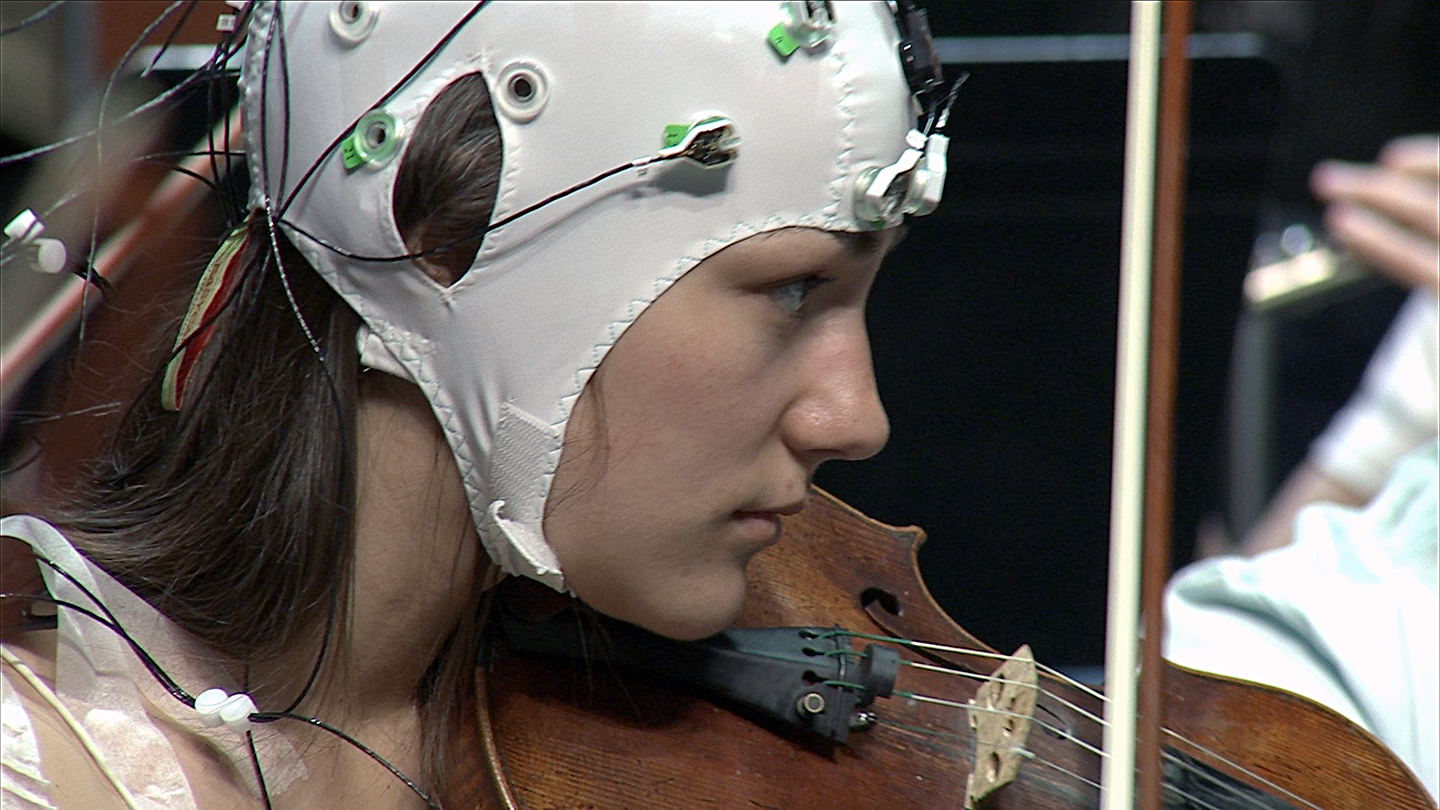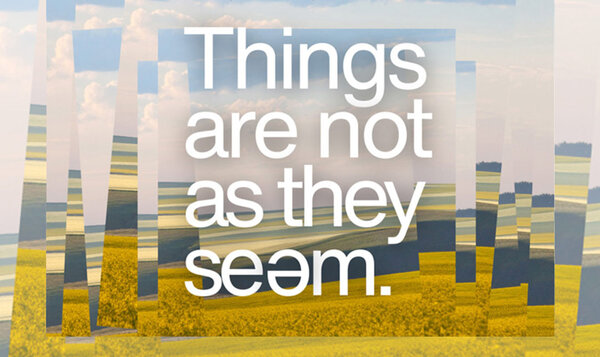
USask and Saskatoon Symphony Orchestra conduct joint research: Do brains play the same tune?
Researchers investigate whether synchrony between performers’ brain activity causes beneficial brain activity patterns
University of Saskatchewan (USask) researchers are harnessing new technology to learn what happens in the brains of symphony orchestra musicians when performing together.
A USask research team led by psychologists Janeen Loehr and Jennifer Nicol has been working with the Saskatoon Symphony Orchestra (SSO) over the last year on an experiment that will be shared in a unique way with patrons at the SSO season opening concert on Saturday, Sept. 22.
“This research was a really exciting opportunity for us to measure brain activity from multiple musicians during a live performance and outside of the lab,” said Loehr, principal co-investigator. “There’s only a handful of research groups around the world that can do this kind of work.”
This is believed to be the first time that researchers have investigated whether synchrony between performers’ brain activity causes beneficial brain activity patterns, which may underlie a sense of wellbeing after performing together. This work could help explain why there are benefits, not just when performers play music together, but even when non-professionals play music together.
Loehr noted that in previous research, increased alpha brain wave activity on the front left side of the brain has been associated with listening to music and with happiness.
“There is lots of evidence that group musical performance has psychological benefits such as increasing well-being and reducing stress and anxiety – but exactly how that works is still a mystery,” said Jennifer Nicol, co-investigator on the project.
This is the first collaborative initiative under a new Memorandum of Understanding (MOU) signed on Jan. 28, 2017, by USask President Peter Stoicheff and SSO Executive Director Mark Turner.
“While this is the type of high-level research that could happen anywhere, it’s thanks to the connections we’re building between the symphony and the university that this exciting experiment gets to happen here,” said Turner.
At a dress rehearsal on May 5, the research team recorded brainwave data from four SSO violinists simultaneously as the orchestra performed Élan, an original orchestral composition by Canadian composer Derek Charke commissioned for Canada’s 150th.
The violinists had portable electroencephalography (or EEG) caps placed on their heads. Signals from the caps were fed into attached laptops. The full orchestra sat in silence for one minute, and then performed Charke’s Élan, then sat in silence for an additional minute.
“Thanks to this compact portable technology, we have a real possibility to look at how musical group performance affects mood, and how similarities between performers’ brain activity contributes to that—things we have never been able to examine before,” Loehr said.
At the Sept. 22 concert, the violinists’ previously recorded brain activity will be projected onto a screen above the orchestra to accompany their live performance of Élan. This visual representation will show how EEG activity changes as the musicians’ attention fluctuates between focusing on their own performance and focusing on others as they synchronize with each other.
As well, during the intermission, USask researchers will have their brainwave recording equipment on display and will be on hand to talk about the study.
The research collaboration, funded by USask, is a major interdisciplinary undertaking involving with eight collaborators from various disciplines, as well as four undergraduate students, one graduate student, and one post-doctoral fellow.
The research team hopes to publish a research paper on their findings next year.
The initial idea for a research collaboration came from Farrah Mateen, a USask graduate now at Harvard Medical School. Mateen proposed using portable EEG devices with musicians to Turner after successfully treating patients in Burma using the caps.
The specialized EEG equipment used for the experiment will also be available for future studies in a variety of disciplines. Researchers from USask colleges of education, arts and science, and medicine say this project will pave the way for further research opportunities in neuropsychology, music therapy, and diagnosis of epilepsy and dementia in rural and remote medicine.
Loehr and Nicol also plan to use the EEG equipment to examine the benefits of music therapy at the brain level.
“For instance, we may be able to record brain activity between a music therapist and a client,” said Nicol.
In December, Loehr and Nicol will host a public lecture about the study at McNally Robinson bookstore.
The MOU between the SSO and USask formalized a musical collaboration underway since 1931, the inaugural year of the SSO and the USask music department.
The agreement aims to foster connections between the community and the university’s diverse range of scholarly and artistic work, including events and projects across a wide swath of departments and colleges. The partnership also promotes engagement with the USask instrument collections, such as the Amati string instruments, a rare quartet of 17th-century instruments, and the growing Kaplan Collection, comprised of historical and indigenous instruments from around the world.
See a video about the project here: https://youtu.be/MDLhjniqFCU


